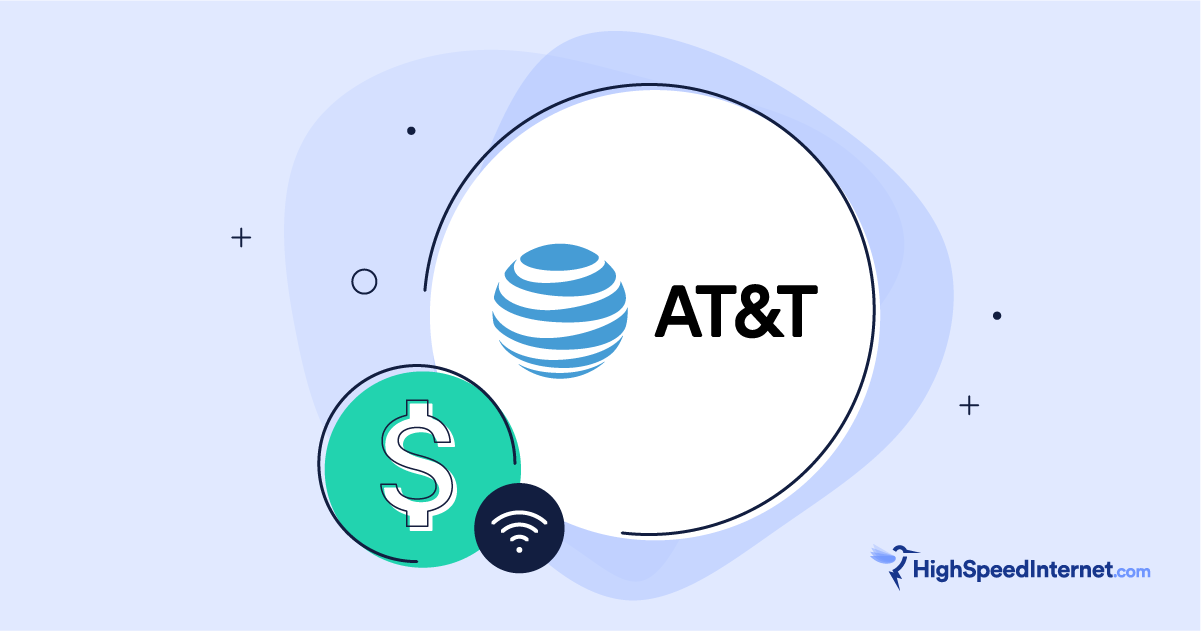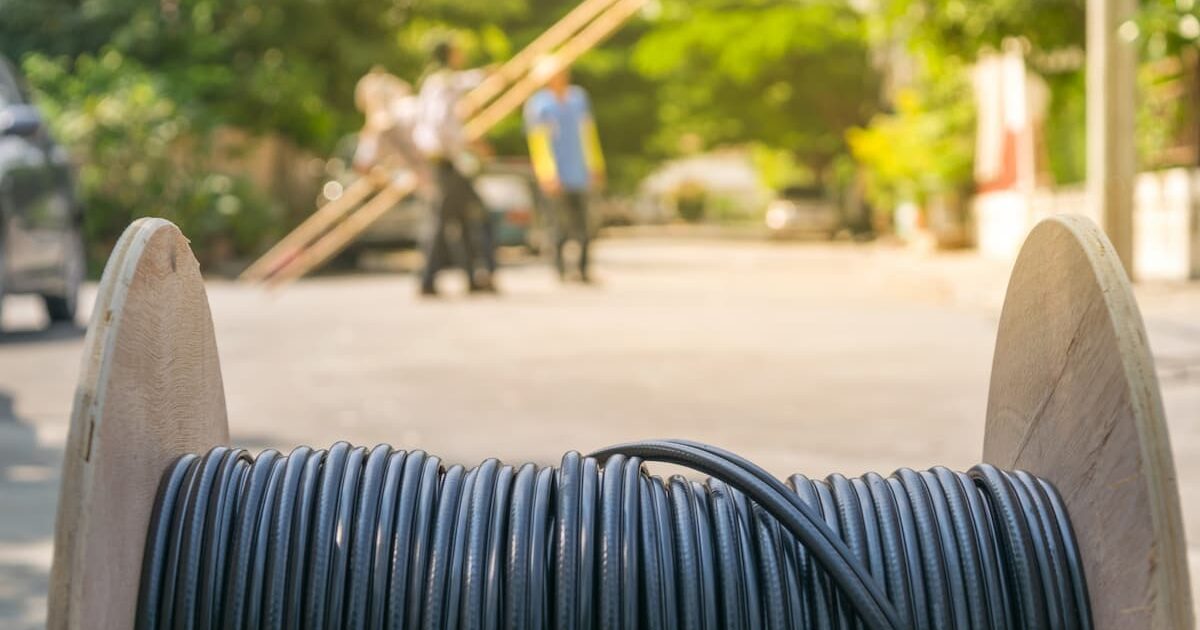How Long Does It Take to Get Internet in a New Home?
Dec 2, 2025 | Share
Brand Guides
When you move into a new home, the first thing you probably want to do is set up some furniture like your bed, couch, and TV. The second thing you’ll want is an internet connection so you can actually watch something on your TV. This is even more important if you work from home, as you might only have the length of a weekend before you need to be back online Monday morning.
Fortunately, there are a number of ways you can quickly set up your internet to ensure that you miss the minimum amount of work (or relaxation) during your move.
On this page:
Best-case scenario | Starting from scratch | Temporary solutions | Bottom line | Additional resources
On this page:
Best-case scenario
The easiest way to get your internet set up in your new home is if it’s already wired for one or more providers. Presumably, the person who lived there before you also had an internet connection, and if it was a wired connection, those cables are probably still there. Apartments and condos often come wired for one specific provider.
If they left the router and other equipment behind, then all you have to do is contact the provider and set up your account. If they took the equipment with them (or returned it, if they were renting), you can still set up your internet the same day if you can make a trip to your provider’s nearest physical location to pick your new equipment in person. Large brands like Xfinity, T-Mobile, and AT&T have at least one location in major cities. If picking your equipment up in person isn’t a practical option, providers can usually have it shipped to you in a day or two.
There are, of course, downsides to going with what’s already installed in your new home. First off, your options are limited to whatever the previous owners had. This probably means only one or two options that might not be your first choice. Additionally, you might not have a connection that meets your needs. Many providers still have much larger DSL or cable networks than fiber-optic networks, so even if your default provider has plans that you like, you might not be able to sign up for them in your new location.
If you’re not using a pre-installed connection, then you have a lot more options. But if you want to get online as soon as possible, you need a connection that’s quick and easy to set up.
Starting from scratch
If you don’t have an internet connection installed in your new home or if you don’t like the options you have, you’re going to have to choose a new provider and install a new connection. Depending on what kind of connection you choose, this process could be either fast or slow.
Want to see all the internet options available in your area?
Enter your zip code below for the full list.
4G/5G home internet: The quick and easy option
The quickest and easiest internet connections to set up from scratch are 4G or 5G home internet connections like . These don’t involve digging up your yard or drilling a hole in the side of your home. Instead, you set up your wireless antenna inside your home in a location with good reception, and you’re set. 4G and 5G home internet use cellular technology, so they have wide availability that reaches most of the U.S. population.
Because there’s no installation, you can also still get 4G and 5G home internet in apartment buildings or restrictive HOAs that would otherwise require you to use a specific provider. This gives you a lot more flexibility and can potentially save you a lot of money on your monthly bill. No installation also means no installation fee, so that’s another nice perk.
Compare 5G home internet providers
| Provider | Speeds up to | Price | Order online |
|---|---|---|---|

| 498Mbps | $50–$70/mo.* w/ AutoPay, plus taxes & fees. | |
|
| 1,000Mbps | $50–$75/mo.† w/ Auto Pay | View Plan |
|
| 1,000Mbps | $30.00–$75.00/mo.‡ | View Plan |
Data as of 6/3/2025. Offers and availability may vary by location and are subject to change.
*Guarantee exclusions like taxes and fees apply.
†Price per month with Auto Pay & without select 5G mobile plans. Consumer data usage is subject to the usage restrictions set forth in Verizon’s terms of service; visit: https://www.verizon.com/support/customer-agreement/ for more information about 5G Home and LTE Home Internet or https://www.verizon.com/about/terms-conditions/verizon-customer-agreement for Fios internet.
‡w/ Auto Pay. Available in select areas.
Other wireless connections
If you don’t live in an area with 5G or 4G availability, there are other wireless options that don’t require a physical cable running to your home. Unfortunately, these choices require the installation of a dish or antenna on your home, which requires professional installation.
Since these options generally involve mounting hardware to your roof and running a cable through your wall, they don’t really work in apartments or HOAs where you can’t poke holes in the side of the building. In some situations, technicians can install a dish on a freestanding pole in your yard or run the cable through a window. Talk to an agent to see if this might be an option for you.
Unlike other satellite providers, Starlink doesn’t require professional installation. However, due to logistical and network management issues, Starlink customers have had to wait up to 11 months at times for their internet service. So we’re listing it down here, rather than with the quick and easy options above.
Compare wireless providers
| Provider | Speeds up to | Starting price | Order online |
|---|---|---|---|
| 150Mbps | $99.99/mo.* | ||
| 100Mbps (stated speeds are not guaranteed) | $39.99/mo.† for first 12 mos. | ||
|
| 400Mbps | $40/mo.‡ | View Plan |
|
| 50Mbps | $25/mo.* | View Plan |
Data as of 12/02/2025. Offers and availability may vary by location and are subject to change.
*Prices and availability vary by location. Installation fees, monthly equipment lease fees, and taxes may apply. After 100 GB of High-Speed Data usage, you still have unlimited access to Standard Data, which may result in slower speed.
†Minimum term required and early service termination fees apply. Monthly Fee reflects the applied $5 savings for ACH enrollment. Offer may vary by geographic area.
‡Plus hardware, shipping & handling fees, and tax. Fully refundable. Depending on location, some orders may take 6 months or more to fulfill.
Wired connections
Wired connections, especially fiber, are generally faster and more reliable than wireless connections. But you’ll have to deal with a professional installation if you don’t already have a line running to your home. If the provider has access from a utility pole, installation can be as simple as running a cable from the pole to your house. (Though getting it inside your house to the right location can be an ordeal in itself.)
Buried cable is much more involved, and requires the technician to identify the location of gas lines and other potential hazards. In either case, many providers can still get your internet up and running within a week. But there can be a lot of variation depending on the provider, your location, and whether the provider has their own installation technicians or contracts it out to local companies.
Fiber and cable networks don’t have the massive coverage area of cellular networks and satellite, so the available providers will vary depending on what area of the country you live in. If you live in an urban or suburban area, there’s likely at least one or two providers that have coverage in your area.
Are you looking for a fiber or cable provider in your area?
Enter your zip code to see all the internet providers in your neighborhood.
Temporary solutions
Sometimes you need the speed of a fiber connection (or you really want that fancy Starlink dish), but don’t have time to get it set up before you move. Rather than settling for a connection that won’t meet your needs, you can find temporary solutions that will keep you online until you can get the plan you want.
If you’re signing up for an internet plan on a temporary basis, you want to avoid anything with long-term contracts or high up-front costs. Here are a few options that fit the bill:
These connections aren’t always the fastest, the cheapest, or the most convenient, but they’ll get you connected right away so you’re not stuck offline in your new place for days or weeks.
Bottom line: Internet now is better than internet later
In our hyperconnected world, there’s often a real cost to being disconnected from the internet, whether that’s time off work or being forced to wait to see the next episode of Shōgun. Fortunately, there are a lot more ways to get online than most people know about, both long-term solutions like and temporary solutions like a mobile hotspot. So whatever your situation, there’s a way for you to get online today.
Additional resources
Moving to a new house? Here’s some resources to help your internet up and running.
Author - Peter Christiansen
Peter Christiansen writes about telecom policy, communications infrastructure, satellite internet, and rural connectivity for HighSpeedInternet.com. Peter holds a PhD in communication from the University of Utah and has been working in tech for over 15 years as a computer programmer, game developer, filmmaker, and writer. His writing has been praised by outlets like Wired, Digital Humanities Now, and the New Statesman.
Editor - Jessica Brooksby
Jessica loves bringing her passion for the written word and her love of tech into one space at HighSpeedInternet.com. She works with the team’s writers to revise strong, user-focused content so every reader can find the tech that works for them. Jessica has a bachelor’s degree in English from Utah Valley University and seven years of creative and editorial experience. Outside of work, she spends her time gaming, reading, painting, and buying an excessive amount of Legend of Zelda merchandise.




